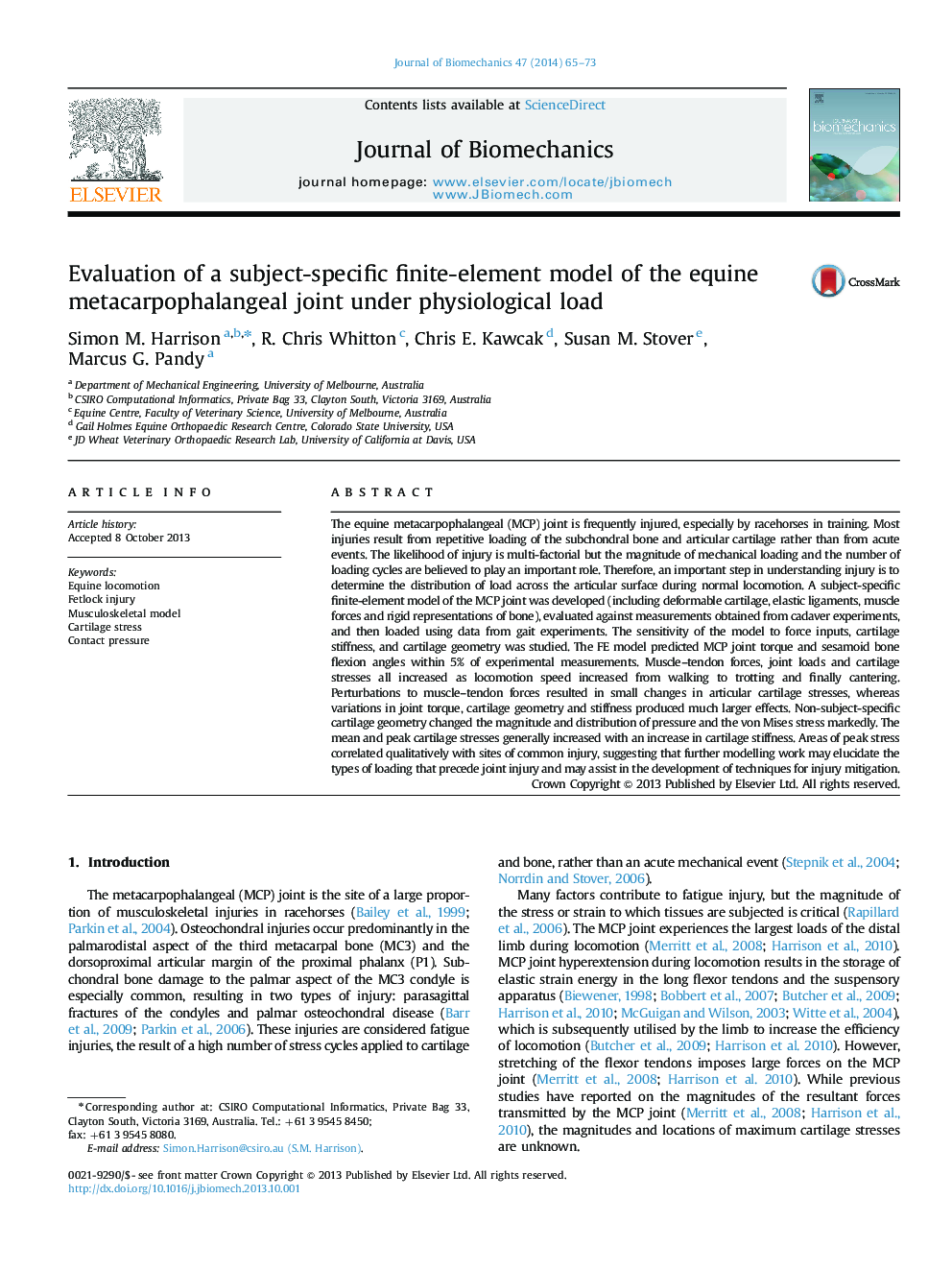| کد مقاله | کد نشریه | سال انتشار | مقاله انگلیسی | نسخه تمام متن |
|---|---|---|---|---|
| 872157 | 910238 | 2014 | 9 صفحه PDF | دانلود رایگان |
The equine metacarpophalangeal (MCP) joint is frequently injured, especially by racehorses in training. Most injuries result from repetitive loading of the subchondral bone and articular cartilage rather than from acute events. The likelihood of injury is multi-factorial but the magnitude of mechanical loading and the number of loading cycles are believed to play an important role. Therefore, an important step in understanding injury is to determine the distribution of load across the articular surface during normal locomotion. A subject-specific finite-element model of the MCP joint was developed (including deformable cartilage, elastic ligaments, muscle forces and rigid representations of bone), evaluated against measurements obtained from cadaver experiments, and then loaded using data from gait experiments. The sensitivity of the model to force inputs, cartilage stiffness, and cartilage geometry was studied. The FE model predicted MCP joint torque and sesamoid bone flexion angles within 5% of experimental measurements. Muscle–tendon forces, joint loads and cartilage stresses all increased as locomotion speed increased from walking to trotting and finally cantering. Perturbations to muscle–tendon forces resulted in small changes in articular cartilage stresses, whereas variations in joint torque, cartilage geometry and stiffness produced much larger effects. Non-subject-specific cartilage geometry changed the magnitude and distribution of pressure and the von Mises stress markedly. The mean and peak cartilage stresses generally increased with an increase in cartilage stiffness. Areas of peak stress correlated qualitatively with sites of common injury, suggesting that further modelling work may elucidate the types of loading that precede joint injury and may assist in the development of techniques for injury mitigation.
Journal: Journal of Biomechanics - Volume 47, Issue 1, 3 January 2014, Pages 65–73
